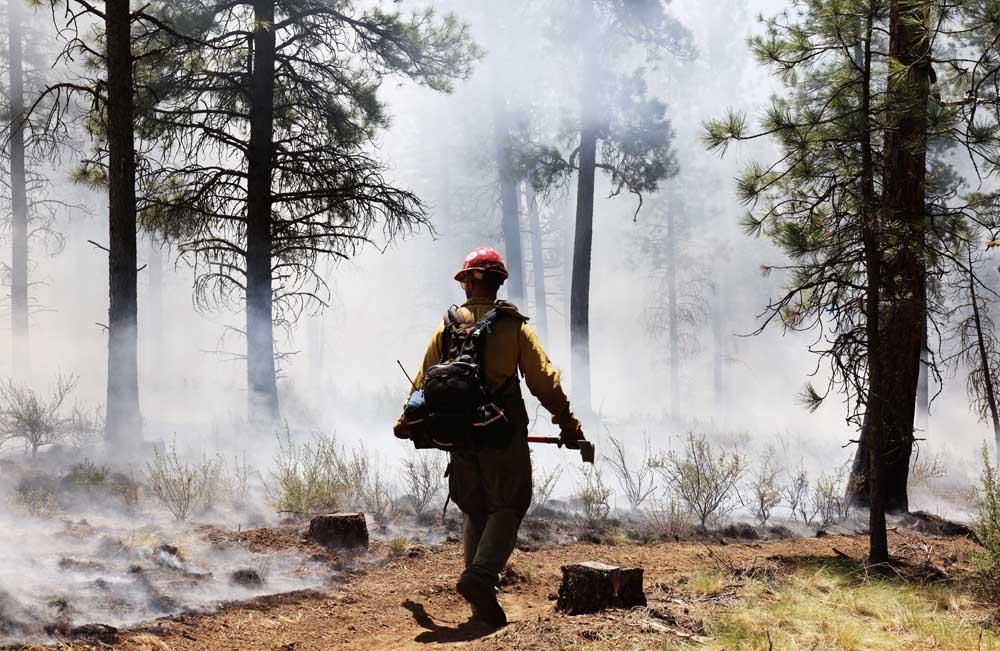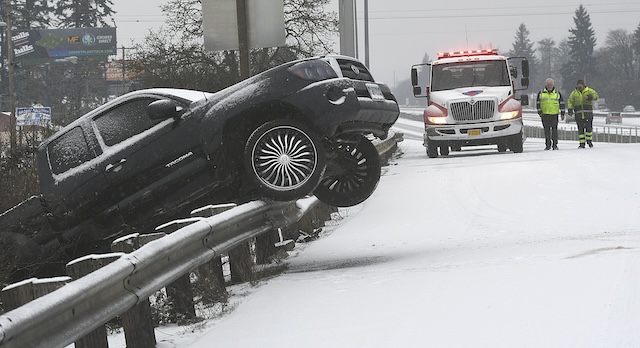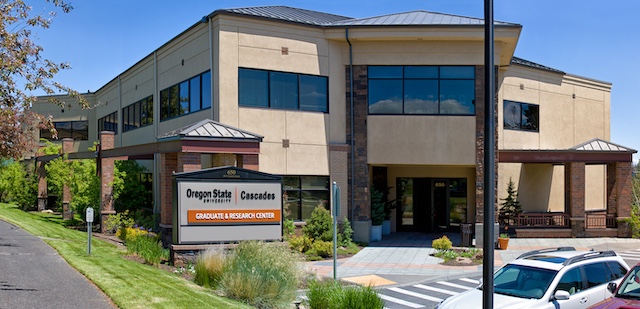Prescribed burning heats up ahead of Oregon’s wildfire season, what you need to know
Published 3:00 pm Friday, June 2, 2023

- U.S. Forest Service firefighter Luke Acorn works on a prescribed burn on the Deschutes National Forest east of Sunriver on Tuesday.
The smell of smoke in the air around Bend, Sisters and La Pine does not always mean a wildfire nearby. This time of year, it’s most likely a fire intentionally set to reduce trees and brush that can exacerbate a wildfire.
These fires, known as prescribed burns or controlled burns, are held in the spring and fall when vegetation moisture and cooler temperatures make them easier to control. Around Bend, most large prescribed burns are managed by the U.S. Forest Service. Wildfire crews typically burn around 50 to 400 acres in a day or two, sometimes three.
Across the West, the Forest Service and state agencies are increasingly turning to prescribed burns as a tool to prevent large fires that threaten communities. Critics say the smoke created by these burns is an unnecessary health risk.
While opinions vary, the federal government has recently upped the ante on prescribed burns by increasing the funding needed to conduct them.
Here is what you need to know:
A changed forest
Central Oregon forests have undergone enormous structural and biological change since the arrival of European settlers in the early 1800s.
The introduction of livestock has been one source of this change. Ranchers have long grazed their cows, horses, sheep, and goats on the forest floor, removing grasses that once carried light fires through the landscape.
Wildfire management game plans have also impacted forests. Stamping out fires as soon as they appear has led to unhealthy forests.
We need fire, sometimes
When fire sweeps through a forest it clears away debris on the ground. Smaller trees and shrubs burn, reducing competition for water and nutrients, and allowing mature trees to dominate a forest.
When humans put out wildfires, forest health, and resiliency decline. Tree growth is stunted, and they become susceptible to tree diseases and insects.
Native Americans recognized the need for fire and allowed forests to burn naturally and even set low-intensity fires to clear out overgrown forests.
An overstocked forest, combined with more humans living near forests and recreating near them, plus climate change that is creating drier conditions, has set the stage for the megafires that have consumed massive areas in recent years.
What’s the goal of a prescribed burn?
Prescribed burns are designed to reduce heavy concentrations of vegetation, known as ladder fuels. When fire starts, these ladder fuels will move the fire into the tree canopy, making the firefighting process more challenging.
“By reducing ladder fuels, firefighters have a much greater chance of success in stopping a wildfire,” said Jaimie Olle, a spokesperson for the Deschutes National Forest.
Prescribed fires in the Deschutes National Forest started in the last week of April. Around 3,000 acres have been burned so far. The prescribed burn season will continue until mid-June, as long as conditions remain favorable, said Olle.
A second window of opportunity to conduct prescribed burns opens up in autumn. Burns usually begin in late September and last a few weeks into October before conditions are too wet.
President Biden’s bipartisan infrastructure bill, signed into law in 2021, sets aside $1.5 billion to reduce the threat of wildfires in Western states. A slice of that funding, around $41 million, is going to Central Oregon to fund forest resiliency efforts over three years. Most of these funds will be spent on prescribed burns.
How are the burns conducted?
Intentionally starting a fire in a forest is serious business, and crews that ignite a prescribed burn follow a strict set of cautionary measures beforehand.
“The burn boss closely monitors the weather and fuels conditions and is in frequent communication with the National Weather Service to ensure they are updated on current and expected conditions,” said Olle.
Humidity, temperature, wind speed and ground moisture levels are a few of the factors that go into determining if a burn can be conducted. The burns are done under conditions that best move the smoke up and out, usually forming large smoke columns.
Because weather conditions can change rapidly, the Forest Service typically cannot announce a burn until the day before crews start one.
“The Forest Service acquires approval for each day ignitions are planned,” said Olle. “Oregon Department of Forestry smoke forecasters provide direction on timing and location of ignitions with their daily approvals.”
While it’s not a common occurrence, prescribed burns have escaped from fire crews, creating unintentional forest fires.
Last year, fire investigators determined that a megafire in New Mexico was started by a pile burn that smoldered for weeks before erupting on the landscape. And last month a planned burn on the Willamette National Forest escaped and grew to 150 acres.
Olle said if a fire does move outside its intended perimeter, the burn crew has contingency engines, firefighters and firefighting equipment to contain it.
What is the impact on the forest’s ecology?
While it may seem counterintuitive, biologists say periodic burns can be beneficial to wildlife ecosystems. Bridget Moran, Bend field office supervisor for the U.S. Fish and Wildlife Service, said prescribed burns can increase overall forest health while protecting communities.
“Not only do they help reduce wildfire risk, but prescribed fires also help control invasive species that outcompete rare native plants,” said Moran.
Fire also allows nutrients to reenter the soil, creating new habitats for plants and animals.
Ponderosa pine and dry mixed-conifer forests, like the ones in the Central Oregon Cascades, historically burned every 10 to 25 years, and even more frequently in some areas. Low-intensity forest fires result in open forests of large trees with a forest floor of grasses and scattered shrubs, said Olle.
Where can you get information on prescribed burns?
For the most up-to-date information on controlled burns, Central Oregon Fire Info has an interactive map with planned burn locations. It is updated almost daily and can be viewed at centraloregonfire.org/prescribed-fire-smoke-plans. Information is also posted on the agency’s Twitter feed @CentralORFire. To receive wildfire and prescribed fire text alerts, text COFIRE to 888-777.
More coverage: Wildfire evacuation: Bend officials outline what you need to know








